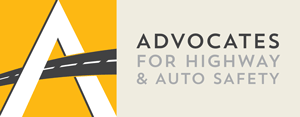FOR IMMEDIATE RELEASE: September 17, 2021
CONTACT: Pete Daniels / [email protected] / 301-442-2249 (C)
Statement from Cathy Chase, President, Advocates for Highway and Auto Safety, on Child Passenger Safety Week
Increasingly dangerous roads demand action in state capitals and Congress to protect child passengers.
This “Child Passenger Safety Week” (September 19-25), Advocates for Highway and Auto Safety would like to bring attention to the urgent need to address the alarming increases in motor vehicle crash fatalities, documented by the National Highway Traffic Safety Administration (NHTSA) in the first three months of 2021, which are putting all child passengers in undue and unnecessary risk. Worse yet, these figures confirm the continuation of a deadly trend that began last year. Upticks in speeding and impaired driving coupled with less seatbelt use and reckless driving are actions none of which young children have control over and all of which put them in harm’s way.
Additionally, millions of school children are entering this perilous roadway environment with their return to in-person classes. We urge all parents and caregivers to make sure their children are properly secured in vehicles according to their age and size. We also call on lawmakers across the country and in Congress to advance proven safety solutions to reduce motor vehicle crashes, injuries and fatalities.
State Laws to Protect Child Passengers
Motor vehicle crashes are a leading cause of death for children in the U.S. More than 1,000 children aged 14 and younger were killed and an estimated 183,000 children were injured in 2019, the latest year for which data is available. Placing children in a rear or forward facing safety seat, booster seat or safety belt as appropriate for their age and size greatly reduces the risk of serious injury or death. A 2020 NHTSA study found that safety seats are 47 percent effective in preventing fatalities for ages 1-3 in all crashes, 43 percent effective in preventing fatalities for ages 3-5 in all crashes, and 67 percent effective in preventing serious to critical injuries for ages 5-8 in all crashes.
Advocates rates every state in our annual Roadmap of State Highway Safety Laws on the enactment of optimal booster seat and rear facing through age two laws. This year, Nevada became the latest state to require children to remain in a rear-facing safety seat until age 2 or older, leaving 34 states with a ready opportunity to enact this critical upgrade (AL, AK, AZ, AR, CO, DE, FL, GA, HI, ID, IN, IA, KS, KY, MD, MA, MI, MN, MS, MO, MT, NH, NM, NC, ND, OH, SD, TN, TX, UT, VT, WV, WI, WY). 34 states and DC have yet to enact an optimal booster seat law as defined by Advocates (AL, AK, AZ, ZR, CO, CT, DE, FL, HI, ID, IN, IA, KS, KY, LA, MS, MO, MT, NE, NV, NH, NM, NY, NC, OH, OK, PA, SD, TN, VT, VA, WI, WY). These laws are an essential component to achieving appropriate child safety seat and seat belt use, and we urge states that have not done so already to prioritize their enactment during the next legislative session.
Upgrading School Bus Safety
While children are much more likely to arrive at school safely while riding a school bus compared to traveling by car, the safety of school buses still can be improved. Advocates commends Sen. Tammy Duckworth (D-IL) and Reps. Steve Cohen (D-TN) and Albio Sires (D-NJ) for introducing the School Bus Safety Act (S. 2539/ H.R. 3381) to require safety upgrades on new school buses. These include several National Transportation Safety Board (NTSB) recommendations: three-point seat belts for all occupants, automatic emergency braking (AEB), electronic stability control (ESC) and improved fire prevention. The U.S. House of Representatives included AEB and ESC requirements for new school buses as part of the INVEST in America Act (H.R. 3684) passed on a bipartisan vote on July 1. Congress should advance these needed improvements to better protect children on school buses.
Preventing Hot Car Incidents
This year, 22 children have perished in hot car incidents, and more than 1,000 children have died since 1990, according to Kids and Car Safety. The Hot Cars Act (H.R. 3164), sponsored by Reps. Tim Ryan (D-OH), Jan Schakowsky (D-IL) and others, directs the U.S. Department of Transportation (DOT) to advance requirements and performance standards for occupant detection and alert technology in new cars. This language was incorporated in the INVEST in America Act and is supported by a diverse coalition of more than 65 organizations. Congress must do its part to end these preventable tragedies by enacting similarly strong legislation this year.
Advancing Overdue Safety Rules to Protect Children
Numerous congressionally mandated actions that would improve child passenger safety have been languishing at NHTSA; some are more than five years overdue. These include side impact requirements for child restraint systems, strengthening crash testing standards related to child restraints, improving child Lower Anchors and Tethers for Children (LATCH) restraint systems, as well as requiring rear seat belt reminders. Additionally, the federal safety standard for preventing seatback collapse during a crash has not been updated in more than 50 years. Thousands of families have suffered catastrophic injuries or deaths due to seatback collapse, and many of the victims have been children. We urge NHTSA to take swift action on these needed improvements.
Protecting children with proven safety solutions is an achievable goal. This Child Passenger Safety Week, we call upon state and federal officials to make it happen.
Advocates for Highway and Auto Safety is an alliance of consumer, medical, public health, law enforcement, and safety groups and insurance companies and agents working together to improve road safety in the U.S. Advocates’ mission is the adoption of federal and state laws, policies and programs that prevent motor vehicle crashes, save lives, reduce injuries, and contain costs.
###

